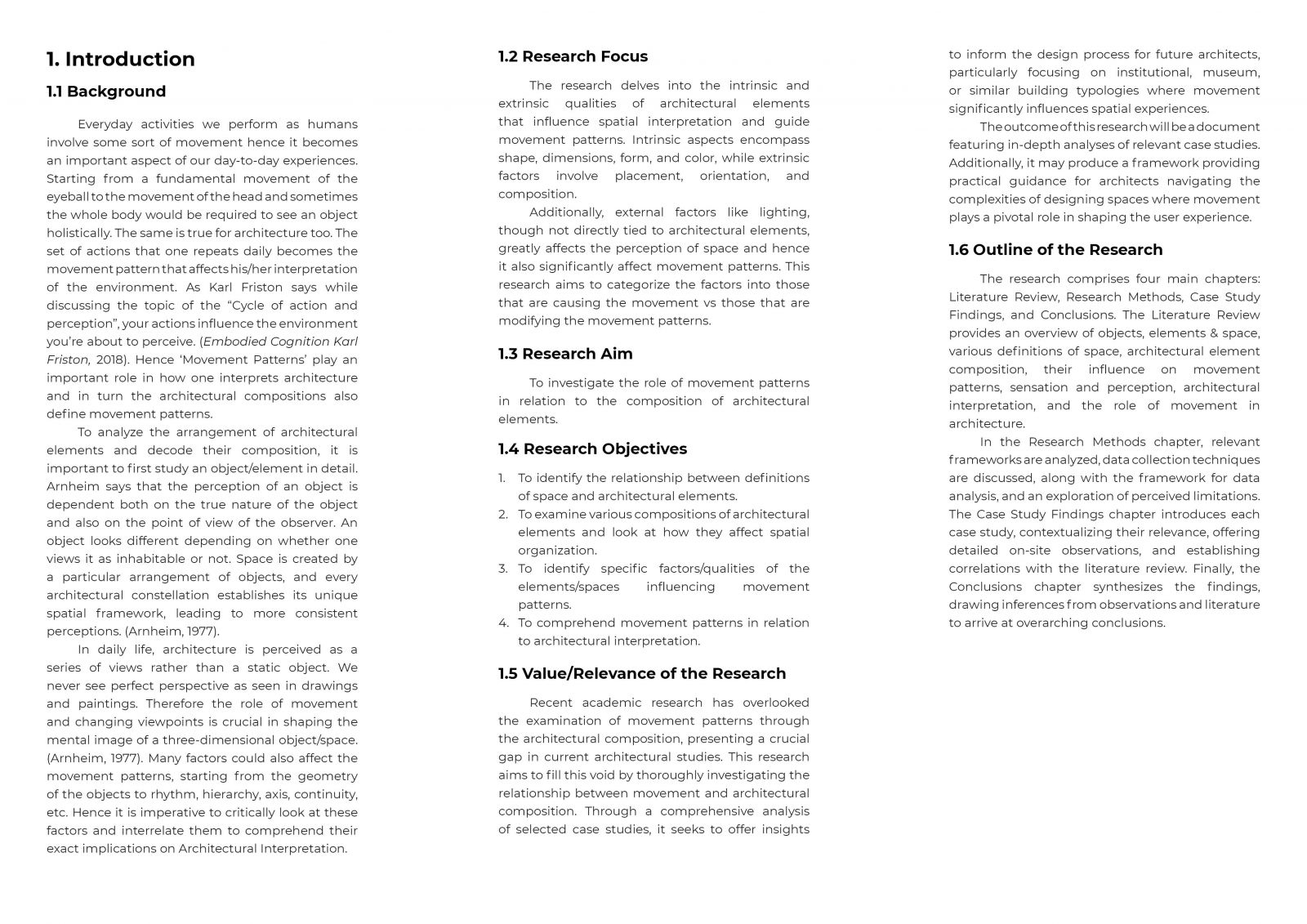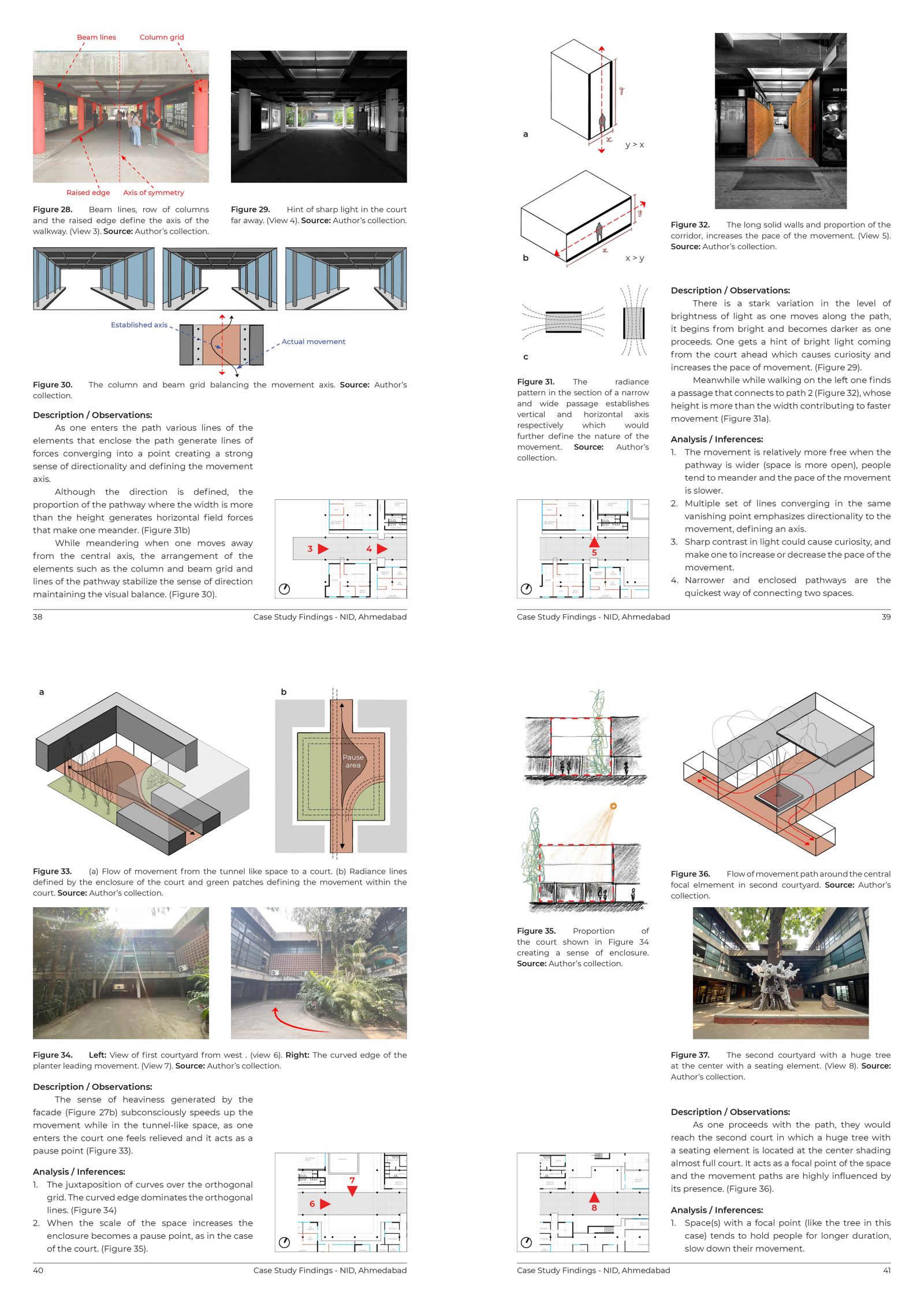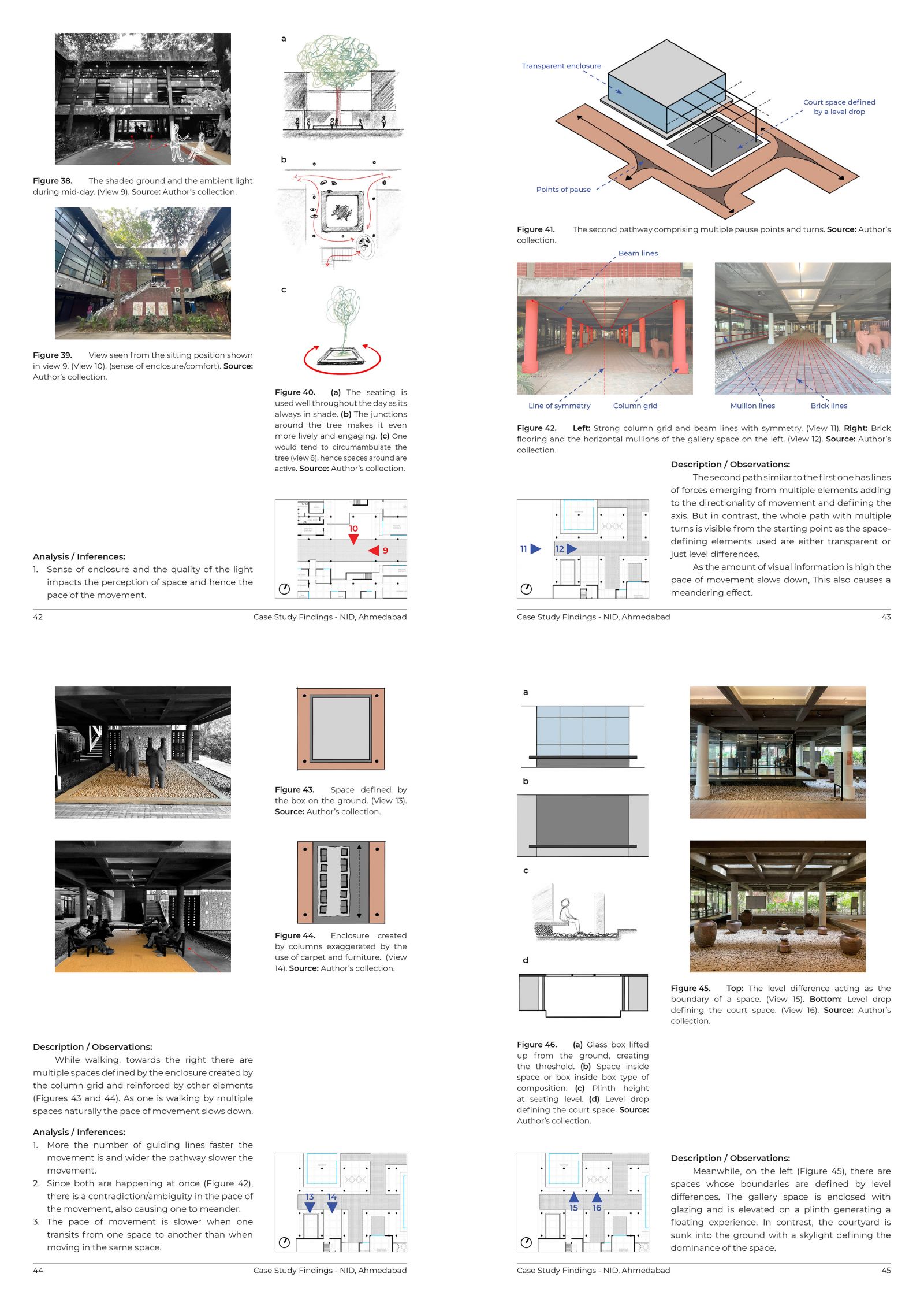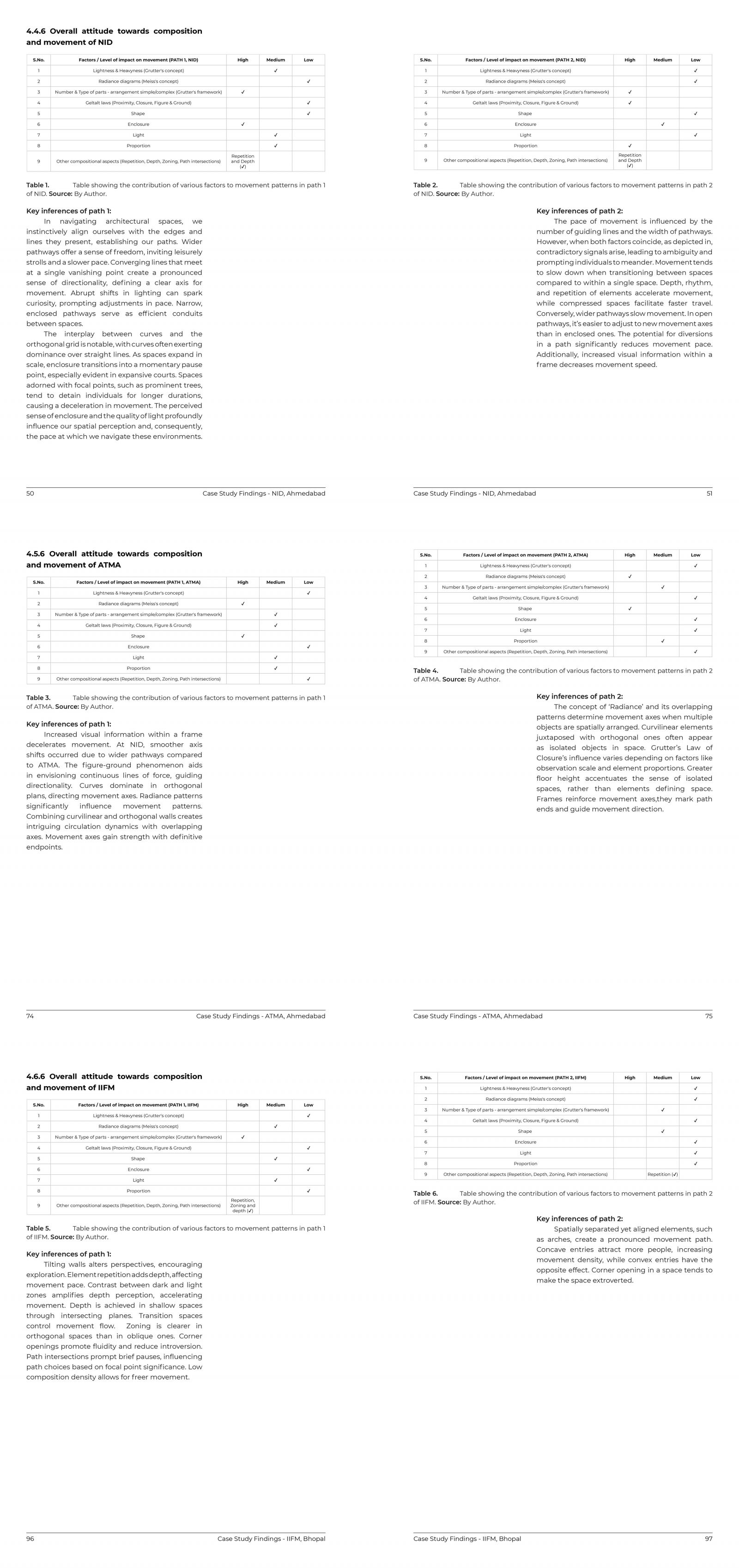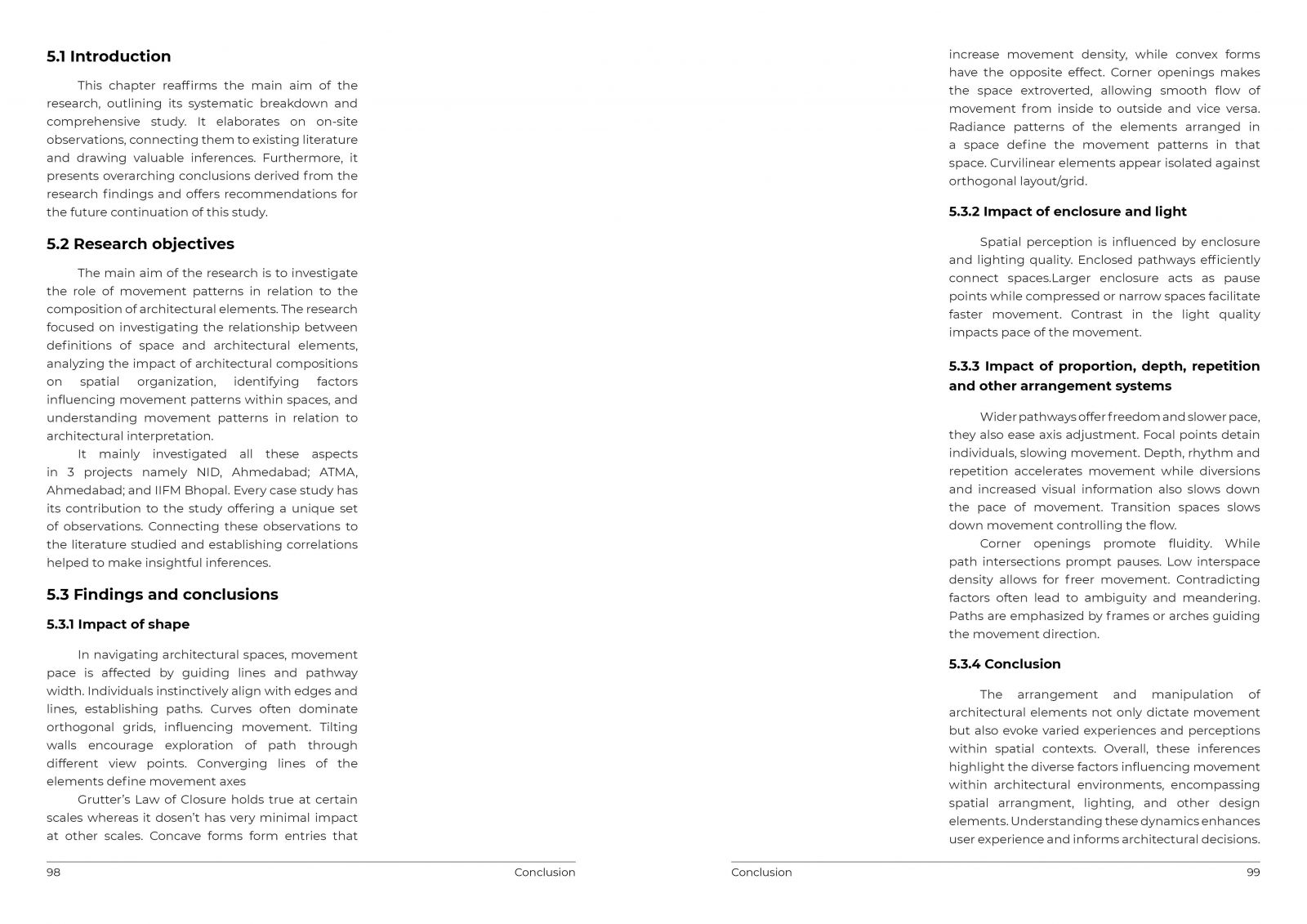Your browser is out-of-date!
For a richer surfing experience on our website, please update your browser. Update my browser now!
For a richer surfing experience on our website, please update your browser. Update my browser now!
Abstract:
Everyday activities we perform as humans
involve some sort of movement hence it becomes
an important aspect of our day-to-day experiences.
The research aims to investigate the role of
movement patterns in relation to the composition
of architectural elements. It focuses on investigating
the relationship between definitions of space and
architectural elements, analyzing the impact of
architectural compositions on spatial organization.
It tries to identify factors influencing movement
patterns within spaces, and understanding
movement patterns in relation to architectural
interpretation.
It mainly investigates these aspects in three
projects i.e., NID, Ahmedabad; ATMA, Ahmedabad;
and IIFM Bhopal. The primary data collected on-site
is described in detail with first-hand observations.
The data is grouped to correlate with the literature.
Inferences are made by correlating the observations
after detailed analysis.
The findings from this research provide
evidence that following factors highly impact the
movement patterns in a space. They are: shape,
enclosure, light, proportion, depth, repetition and
rhythm. Some of the inferences: Wider pathways
encourage leisurely movement, while converging
lines towards vanishing points create a sense of
directionality; Contrast in the light quality impacts
pace of the movement; Depth, rhythm and
repetition accelerates movement while diversions
and increased visual information also slows down
the pace of movement. Geometric manipulations,
such as curved lines amidst grids or transitional
spaces shape the flow and cadence.
The main conclusion drawn from this study
is, that the arrangement of architectural elements
not only dictates movement but also evokes diverse
experiences within spatial contexts.
